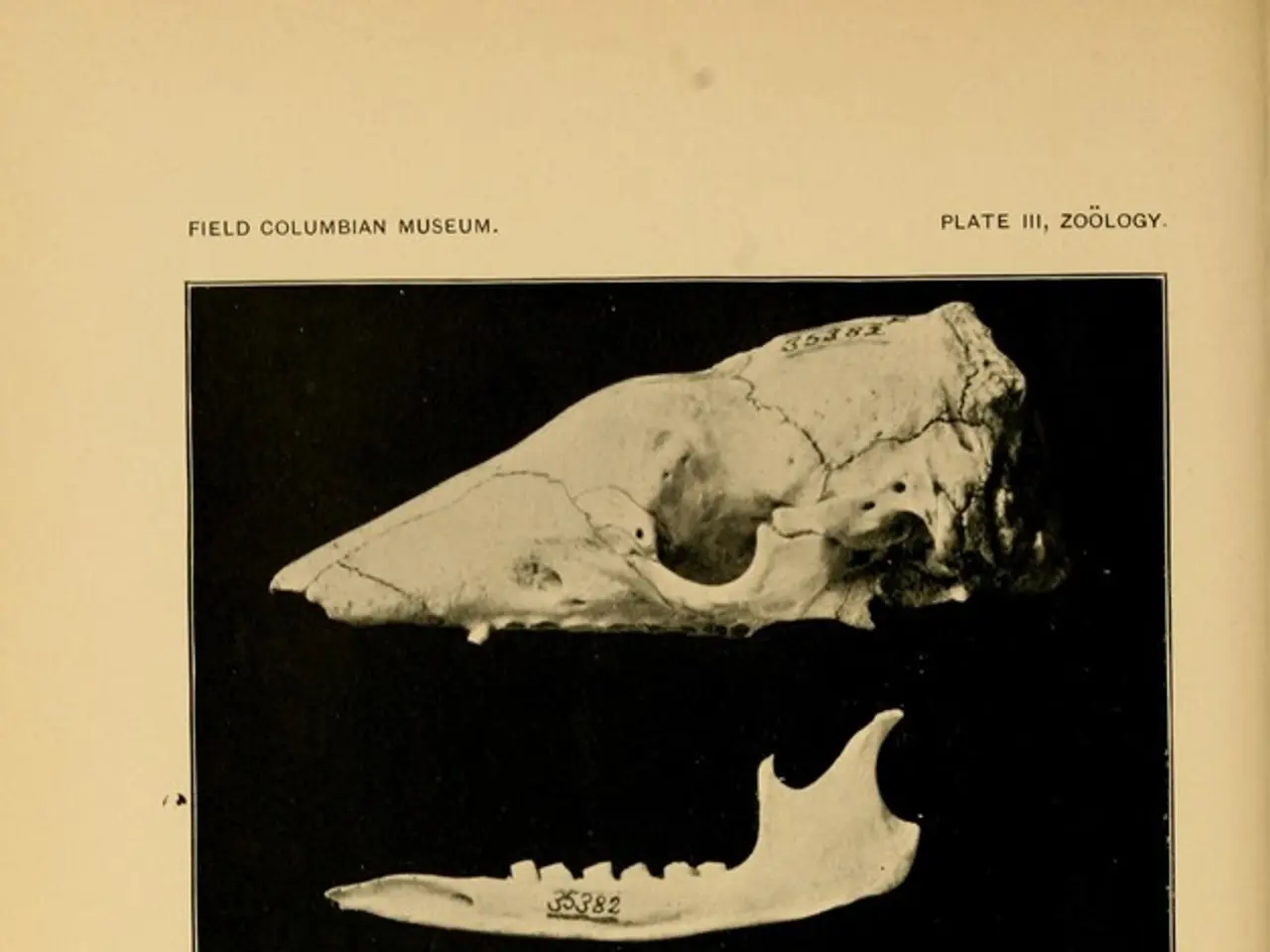Anatomy Lesson: Thyroid Cartilage - Its Constituents, Functions, and Beyond
Article: Understanding the Thyroid Cartilage and Its Importance
The thyroid cartilage, a key component of the larynx, is a shield-shaped structure located in the throat area and is most noticeable as the "Adam's apple." This cartilage, along with other laryngeal cartilages, forms a protective skeleton for the larynx [1][3][5].
Functions of the Thyroid Cartilage
The primary function of the thyroid cartilage is to protect the vocal cords and other internal laryngeal structures from injury [1][5]. It also provides essential structural support to the larynx, maintaining an open airway for respiration [3][5].
In addition to its protective role, the thyroid cartilage plays a crucial part in voice production. It anchors the vocal cords anteriorly, and movements and tension changes in connected cartilages influence vocal cord tension, thereby modulating pitch and sound [1][3][5].
During swallowing, the thyroid cartilage works in conjunction with the epiglottis, a flap of cartilage that covers the glottis, to prevent food and liquids from entering the windpipe [1][5].
Key Structures
The thyroid cartilage is connected to several other cartilages and bones in the neck. It articulates inferiorly with the cricoid cartilage at a synovial joint that allows tilting to adjust vocal cord tension [1][3][5].
Anteriorly, the vocal cords (true vocal folds) attach to the angle of the thyroid cartilage, while posteriorly, they are attached to the arytenoid cartilages [1][3][5]. The thyrohyoid membrane connects the thyroid cartilage to the hyoid bone superiorly, and the epiglottis attaches posteriorly to the thyroid cartilage [1][3][5].
Potential Problems
Despite its vital role, the thyroid cartilage can be susceptible to injury, inflammation, and functional disorders. Blunt trauma to the neck can fracture the thyroid cartilage, compromising airway protection and voice function [1].
Conditions such as laryngitis may cause swelling around or on the thyroid cartilage, affecting voice and breathing [1]. Congenital malformations or ossification changes with age may impair laryngeal movements, and surgical complications can damage the thyroid cartilage or associated nerves [4].
Voice disorders can also result from dysfunction of the muscles or joints related to the thyroid cartilage, leading to abnormal vocal cord tension and pitch disorders [4]. Post-surgical hypothyroidism or nerve damage affecting the thyroid cartilage's related anatomy can diminish physical and mental quality of life, particularly in thyroid cancer patients undergoing thyroidectomy [4].
In summary, the thyroid cartilage is crucial for protecting the airway, supporting voice production, and enabling safe swallowing, but it is susceptible to injury, inflammation, and functional disorders affecting breathing and phonation. Understanding the thyroid cartilage's role and potential issues can help individuals take better care of their laryngeal health.
- The endocrine system, specifically the thyroid gland, influences the functioning and growth of the thyroid cartilage, and its malfunctions, such as hypothyroid, can affect the overall body health as well as the health-and-wellness aspects of individuals.
- While the thyroid cartilage's primary role is to protect the larynx and vocal cords from injury, other thyroid-related medical-conditions like hyperthyroid and thyroiditis can also impact its function, leading to respiratory-conditions or voice disorders.
- Maintaining fitness-and-exercise habits, proper nutrition, and regular medical check-ups for thyroid-related issues can help prevent potential complications related to the thyroid cartilage and the endocrine system.
- Aside from blunt trauma to the neck causing fractures in the thyroid cartilage, other thyroid-related medical-conditions can also affect the laryngeal muscles and joints, leading to changes in vocal cord tension, pitch, and abnormal phonation.
- Engaging in vocal-exercises, treatments, or therapy for thyroid-related voice disorders can help improve voice function and prevent potential laryngeal health issues in the future, ultimately promoting overall health-and-wellness.




